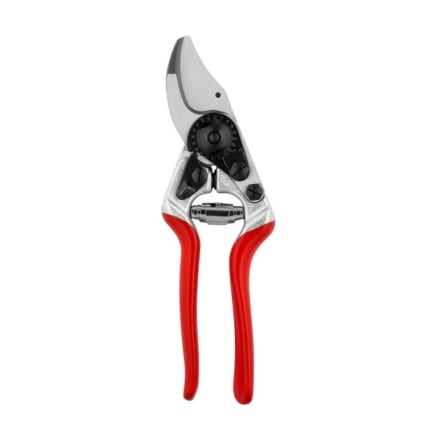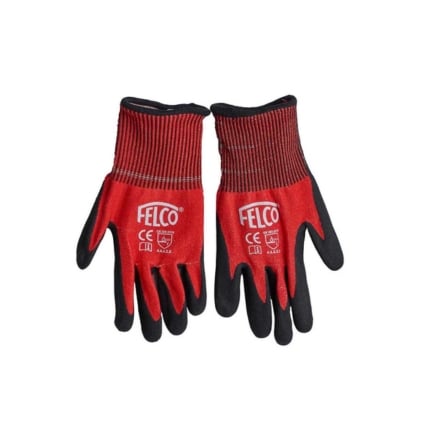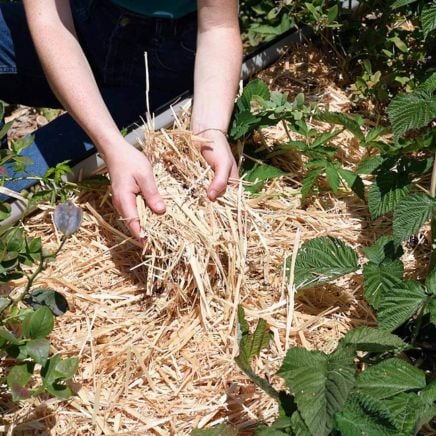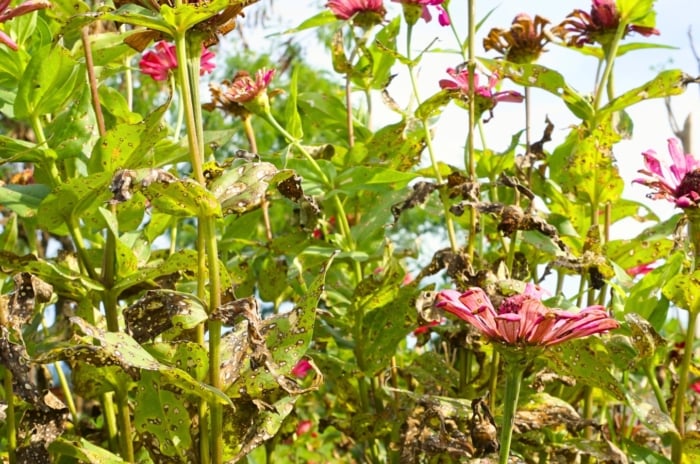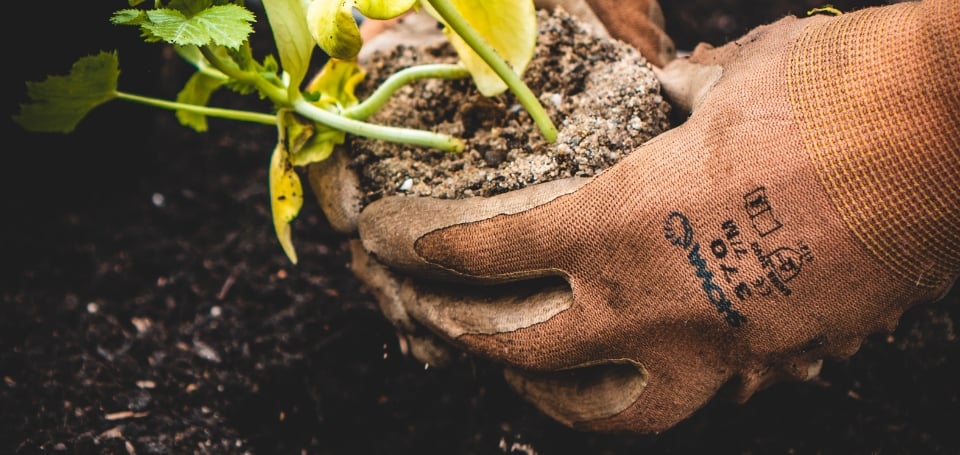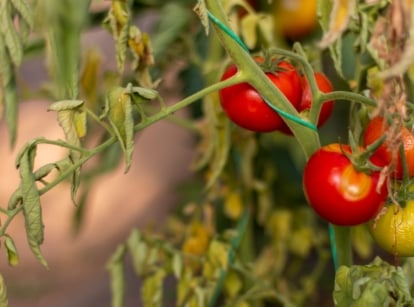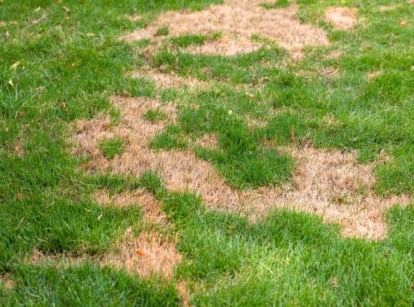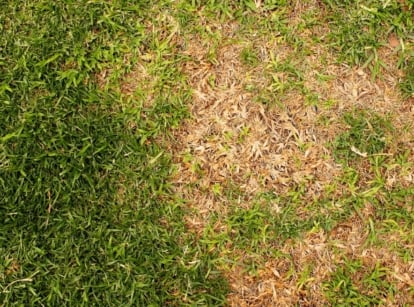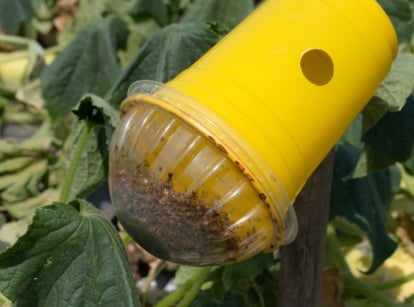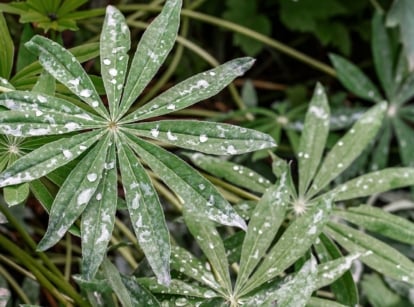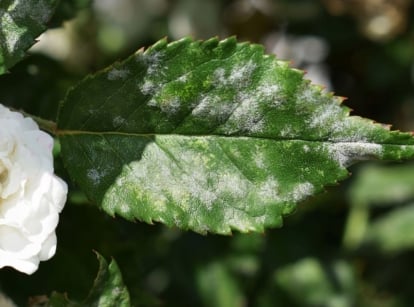Powdery Mildew on Honeysuckle: How to Save Your Plant
White, fuzzy growth is the last thing you want to see on your honeysuckle! It’ll start with small spots and quickly spread out of control. Don’t let the pesky fungi cause issues in your garden. Instead, use this step-by-step guide to take care of the issue.

Contents
Powdery mildew is one of the most common garden diseases. In fact, you may have encountered it already! It’s caused by various fungi that thrive in moist, humid, and leafy environments. The disease covers the foliage with a white-gray fuzzy layer that prevents honeysuckle from photosynthesizing.
In extreme infestations, powdery mildew may prevent honeysuckle flowers from forming or blooming. Prompt treatment can prevent it from causing issues later in the growing season. You don’t want to sacrifice blooms for mildew!
Though these nine steps will remove, treat, and prevent powdery mildew on honeysuckle, they may not remedy all signs of the disease. Even the most experienced farmers have to manage it on their farms. Learn how to spot mildew early on, then use these expert techniques to treat its symptoms and prevent it from spreading.
Step 1: Identify the Signs and Symptoms

Powdery mildews are easily recognizable by their common signs and the symptoms they cause. There are many different species of the disease, and each one targets a narrow range of plant hosts. Some focus on grape plants, while others prefer apples or roses.
Honeysuckles in the genus Lonicera are common targets of this condition. You’ll notice their leaves have patchy splotches of white, fuzzy growth. If you look at the patch each day, you’ll notice it growing, and you may see new spots start to appear away from the original one.
The fuzz can grow on the upper and lower portions of honeysuckle leaves, and it can spread to flower buds, fruits, and open blossoms. You may also notice black splotches, disfigured plants, and weak new growth.
Step 2: Take a Step Back

Once you know the problem is, in fact, powdery mildew, it’s time to take stock of the garden and its conditions. Diseases need three things to be present: a pathogen, a host, and a conducive environment. Remove any one of these three things, and you’ll prevent the powdery mildew on your honeysuckle from spreading.
This disease needs warm temperatures, humid conditions, and ample leafy growth to thrive. It prefers areas with low air circulation, like next to a wall or under a dense tree. Knowing what it needs to grow, you can now alter the garden to remove these accommodating conditions.
You can also try removing the infected host and try again with a resistant variety. Many new honeysuckle hybrids and cultivars are resistant to mildews. They may grow better in the same spot as your current plant.
You may wonder, why not just remove the pathogen? Though this seems like a good idea, it doesn’t address the underlying conditions that cause the disease to spread in the first place. The wind could blow new spores onto your plants and cause another round of infections.
Target all three factors for the best results. Remove infected hosts, treat the fuzzy patches, and change the environment so it’s hostile towards the pathogen.
Step 3: Prune Infected Leaves

To start, locate any leaves that are completely covered in fuzzy fungal growth. They’ll act as hotbeds for future infections, and it’s difficult to remedy them once the fuzz is present. To save your honeysuckle from powdery mildew, prune or snip off any parts with fungal signs.
Avoid snipping the foliage if the plants have sparse growth or a lack of healthy foliage. They may not recover! Instead, alter the environment to create hostile conditions for the powdery growth.
Gather the pruned plants and debris and dispose of them far from your honeysuckle. The infected leaves act as hosts for the disease later in the season. If you leave them around, you’ll see ample powdery blotches the following year. Hot compost the debris to destroy the fungi, bury it a foot deep, or dispose of it in the waste bin.
Step 4: Increase Airflow

Airflow is another key component in removing and preventing powdery mildew on honeysuckle. The spores prefer crowded, dense conditions to easily spread. When you remove ample leaves and space honeysuckle properly, you create a harsh environment for mildews.
The first step is to plant honeysuckles with the proper spacing. Ensure each one has a trellis or similar upright support to grow on, and space them a few feet from each other.
After planting, use pruning and trimming to increase airflow. Remove excess leafy growth, and prune off any dead or diseased stems as you notice them throughout the year.
Step 5: Reduce Shade

Sun-loving honeysuckles are especially susceptible to powdery mildew when they grow in the shade. Shady sites promote ample powdery growth that spreads rapidly without limits. Always plant honeysuckles under sufficient sunlight, whether they need partial shade or full sun.
If you have a shade-loving honeysuckle, avoid giving it more sun than it needs. The key is to provide a suitable home for the species or variety you have. Different honeysuckle species have different needs, and meeting those needs will reduce the number of pests and diseases you see.
Sometimes you can’t transplant a honeysuckle to a more accommodating site. Midsummer is a difficult time for transplanting, as high heat and dry weather make it difficult for honeysuckles to adapt. Instead of moving them, prune taller trees or shrubs above them to increase the amount of sunlight in the area.
Step 6: Adjust Watering

Watering can help or hinder these fuzzy fungi. Moist, wet leaves create ideal conditions for powdery mildew spread, though harsh streams can dislodge the spores from the leaves. You may use overhead watering, as long as you apply it at a good time to discourage the mildew.
Avoid using overhead watering in the early morning or afternoon, as you’ll let water sit on the leaves for long periods. Instead, use overhead watering from sprinklers or hoses in mid-morning when the temperatures are warming and sunlight is abundant.
Mildews dislike direct contact with water, but they prefer moist conditions to thrive. You can forfeit overhead watering altogether and opt for drip irrigation or a similar solution to help. Watering the soil, and not the leaves, will prevent the pathogens from spreading.
Step 7: Add Mulch

Organic mulch is the garden’s secret weapon. It protects and insulates roots, promotes healthy plants, and prevents diseases and pests from spreading. It feeds the soil, which in turn feeds your honeysuckle.
A layer of mulch also prevents water droplets from splashing dirt particles onto the leaves. This will prevent the honeysuckle powdery mildew from spreading. Use an organic mulch, like compost or leaf mold. Straw, coco coir, and fallen leaves also work well.
Avoid using honeysuckle leaves as mulch, as they may already have the spores on them! Dispose of mildew-infected leaves and never use them around the honeysuckle’s growing site.
Step 8: When All Else Fails

Despite your best efforts, this fungal condition can spread out of control. You’ll likely see some level of it annually, though you shouldn’t see extreme infestations. When all else fails, consider using a treatment spray to prevent the infection from spreading.
It’s best to avoid fungicides, as they have devastating effects on the soil food web. They often harm beneficial fungi and bacteria in addition to the pathogens in question. If you do decide to use a fungicide, follow its instructions for proper application rates and guidelines.
Some other non-traditional treatments help reduce this fungal pathogen’s spread. Try a milk spray, or consider using a solution with sodium bicarbonate, garden-safe soap (not dish soap), and water. Spray in the morning or afternoon to avoid harming beneficial insects, and especially avoid spraying honeysuckles in full bloom.
Step 9: Prevent Future Outbreaks

So, you’ve tackled powdery mildew on honeysuckle and protected your blooms. Now what? Now that you know what the disease needs to thrive, you can modify your garden to prevent it in the future.
Never grow honeysuckle in full shade, and ensure there’s regular airflow in the growing site. If mildew reappears annually, consider moving your honeysuckle to a site where the condition is less prevalent. Or, get rid of your old specimen and replace it with a powdery-mildew-resistant variety. Take time this fall to remove fallen leaves and leafy debris to prevent future infections.
With some care, a little attention, and a watchful eye, you can control powdery mildew in your garden. Don’t let it get the best of you! It’s your garden, and you have all the tools you need to prevent the disease from wreaking havoc.

